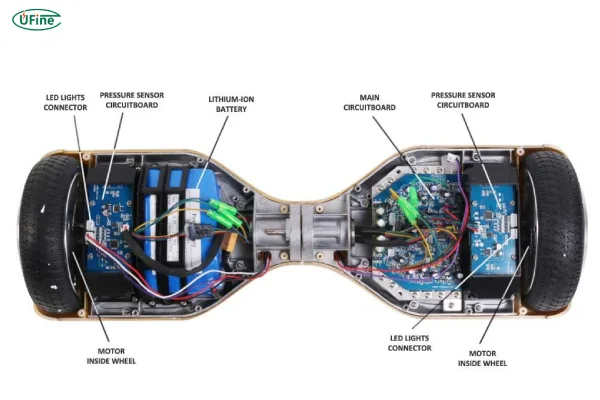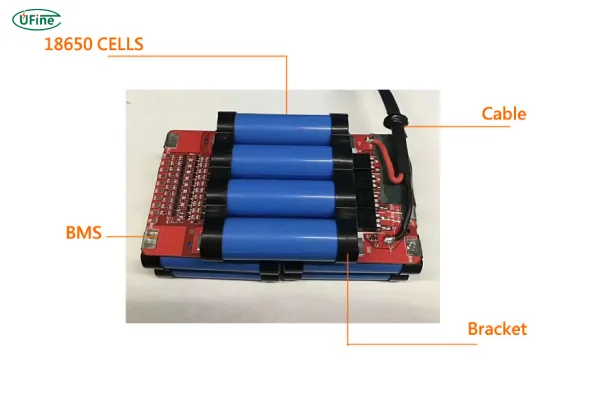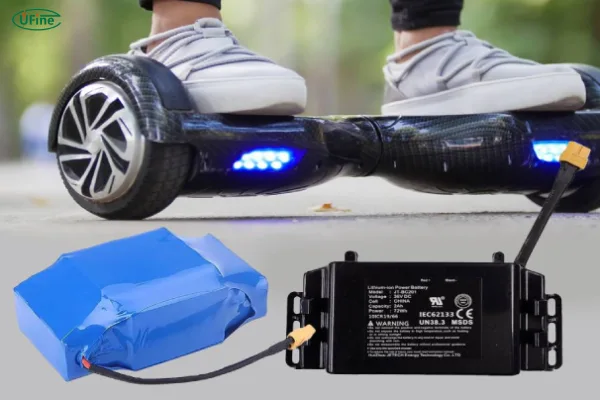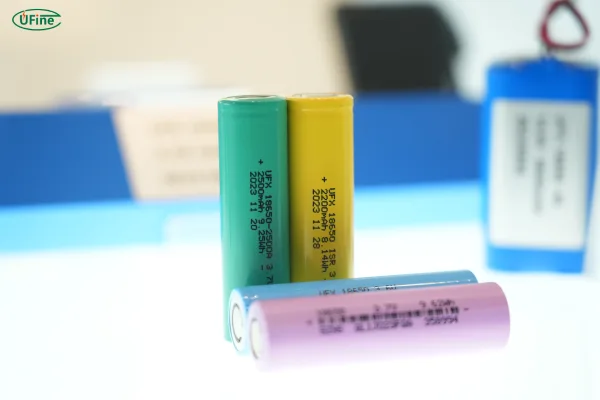
- Part 1. What kind of battery does a hoverboard use?
- Part 2. Common hoverboard battery voltage
- Part 3. The 7 key parameters of a high-quality hoverboard battery
- Part 4. Hoverboard battery price
- Part 5. How long do hoverboard batteries last?
- Part 6. How much capacity do you need?
- Part 7. How do I know if my hoverboard battery is bad?
- Part 8. Can you replace the battery in a hoverboard?
- Part 9. Charging and battery maintenance tips
- Part 10. Conclusion
- Part 11. FAQs
Part 1. What kind of battery does a hoverboard use?
Hoverboards, also known as self-balancing scooters, almost universally rely on rechargeable lithium-ion batteries. These are the same high-energy-density batteries used in smartphones, laptops, electric bikes, and even electric cars.
Why lithium-ion? Because they are lightweight, compact, and capable of holding a large charge in a small space. Compared to older battery types like nickel-cadmium (NiCd) or lead-acid, lithium-ion offers faster charging, longer life, and much better performance. Most hoverboard batteries are composed of 18650 lithium cells, arranged in packs to form a battery rated around 36V.
Some newer or performance hoverboards might use lithium iron phosphate (LiFePO4) batteries, known for their improved safety, thermal stability, and longer cycle life. These are great for users who prioritize longevity and safety.
✅ Pro Tip: Always check for UL 2272 certification to ensure your hoverboard battery meets strict safety standards. It’s worth the peace of mind.
Part 2. Common hoverboard battery voltage
The voltage of a hoverboard battery directly impacts its power, torque, and speed. Most commonly, hoverboards are powered by 36V batteries. However, depending on the model and its intended use, the voltage can vary:
- 24V – Typically found in children’s models. Slower, less powerful.
- 36V – Standard for adult and general-purpose models. Balanced range and speed.
- 42V or 48V – Found in high-performance or off-road hoverboards. Delivers stronger torque and extended riding range.
Keep in mind, the voltage must match the system design of your hoverboard. Using the wrong voltage can cause failure or even fire hazards.
Part 3. The 7 key parameters of a high-quality hoverboard battery
Not all batteries are created equal. When you’re evaluating or purchasing a hoverboard battery, consider these seven essential performance indicators:
- Voltage (V): As discussed, 36V is standard. Make sure it matches your hoverboard’s motor specs.
- Capacity (Ah or mAh): The higher the ampere-hour rating, the longer the battery can run. For example, 4.4Ah offers more range than 2.0Ah.
- Discharge Rate (C-rate): Determines how quickly a battery can safely release energy. A low C-rate may overheat under heavy loads.
- Battery Cell Brand: Premium batteries use high-quality cells from trusted manufacturers like LG, Samsung, or Panasonic.
- Battery Management System (BMS): Protects against overcharging, over-discharging, and short circuits. Absolutely crucial for safety.
- Cycle Life: Refers to how many times the battery can be charged/discharged before capacity drops. Look for over 500 cycles.
- Build Quality and Certifications: Sturdy casing, clean soldering, and UL 2272 or CE certification ensure safety and reliability.
These parameters determine not just how long your battery lasts, but how safe and efficient your hoverboard rides will be.
Part 4. Hoverboard battery price
Let’s talk money. How much does a hoverboard battery cost? The answer varies based on the quality, capacity, and brand.
Here’s a rough breakdown:
- Low-end battery (24V, 2.0Ah): $25 – $45
- Standard 36V, 4.4Ah battery: $50 – $100
- Premium 36V, 6.6Ah or LiFePO4 battery: $100 – $150+
A cheap battery might save you upfront, but may not last long and could present safety risks. A high-quality battery is an investment in durability, performance, and peace of mind.
If you’re a business or project engineer looking for customized lithium battery solutions, check out Ufine Battery. Based in China, Ufine Battery specializes in the development and production of various lithium battery types including lithium polymer, LiFePO4, 18650, ultra-thin batteries, high-rate discharge batteries, and even high-temperature models. We can customize different sizes, voltages, and capacities to suit specific hoverboard designs or other electronics.
👉 Contact Ufine Battery today to get professional support and tailored battery solutions for your needs.
Part 5. How long do hoverboard batteries last?
Let’s be real—hoverboard batteries don’t last forever. The typical lifespan of a good hoverboard battery is about 1 to 3 years or around 300 to 500 full charge cycles. But actual life varies depending on:
- Charging habits
- Frequency of use
- Operating temperature
- Battery quality
If you ride frequently and take care of your battery, it might serve you well for up to three years. But if you leave it in a hot garage or frequently overcharge it, don’t expect it to last that long.
💡 Hint: Batteries start losing capacity after a year of regular use. If your hoverboard no longer travels as far on a full charge, it might be time for a replacement.
Part 6. How much capacity do you need?
The capacity of a hoverboard battery, measured in watt-hours (Wh) or ampere-hours (Ah), directly affects how far and how long you can ride.
To calculate battery energy:
Watt-hours (Wh) = Voltage (V) × Capacity (Ah)
For example:
- A 36V, 4.4Ah battery = 158.4Wh
- If your hoverboard uses ~10Wh per km, your range is around 15 km
For casual riding or kids, 2.0–3.0Ah may be enough. But if you’re commuting or doing longer trips, go for 4.4Ah or higher.
Part 7. How do I know if my hoverboard battery is bad?
If your hoverboard battery is starting to fail, it won’t always tell you directly—but there are signs:
- Red flashing lights
- Hoverboard turns off suddenly
- It won’t charge or only lasts a few minutes
- Battery feels hot or swollen
A faulty battery not only ruins your ride—it’s a safety risk. Replace it immediately if you notice any of these signs. Don’t take chances.
Part 8. Can you replace the battery in a hoverboard?
Yes! Most hoverboard batteries are replaceable, and doing so can breathe new life into an aging board.
Here’s a quick overview of the process:
- Unscrew the bottom panel of your hoverboard.
- Disconnect the old battery and remove it.
- Insert the new battery and reconnect the wiring.
- Reassemble the shell and test your hoverboard.
Make sure the replacement battery matches your model in voltage, size, and connector type. If you’re unsure, consult your manufacturer—or reach out to Ufine Battery for custom-fit options tailored to your hoverboard model.
Part 9. Charging and battery maintenance tips
Taking care of your hoverboard battery is the best way to extend its life and keep it running smoothly. Here’s how:
- Use the original charger or one recommended by the brand.
- Avoid overcharging—unplug once it’s fully charged.
- Charge after every ride, even if it’s a short one.
- Don’t leave it in extreme heat or cold.
- Store at 50-70% charge if not using for a while.
These simple habits can double the life of your hoverboard battery.
Part 10. Conclusion
The hoverboard battery is more than just a power pack—it’s the heart of your hoverboard experience. Understanding how it works, what to look for in a replacement, and how to maintain it gives you the confidence to ride safely and smoothly.
Whether you’re a consumer or a manufacturer looking for a trusted battery partner, consider working with Ufine Battery. With years of experience in lithium battery customization and a wide product range—from LiFePO4 to 18650 and high-rate solutions—they offer everything needed to keep your hoverboards running strong.
Part 11. FAQs
How long can a hoverboard run on a full charge?
A: Depending on capacity, a hoverboard can run 1 to 3 hours or 10–20 kilometers.
Can I upgrade to a larger battery?
A: Yes, if your hoverboard supports the extra weight and space. Be sure to match voltage and connector type.
Is it safe to leave my hoverboard charging overnight?
A: Not recommended. Overcharging shortens battery life and can pose safety risks.
How do I dispose of a dead battery?
A: Don’t throw it in the trash. Take it to a battery recycling center or contact local e-waste services.
Where can I find custom batteries for hoverboards or similar devices?
Ufine Battery provides tailored solutions for hoverboards and other electric mobility devices. Whether you need a high-rate battery or compact custom design, we’ve got you covered.
Related Tags:
More Articles
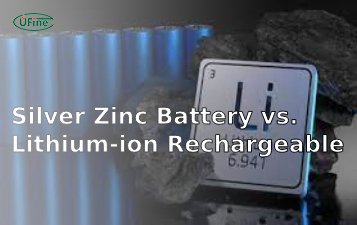
What is the Difference Between Silver Zinc Battery vs. Lithium-ion Rechargeable?
Compare silver zinc and lithium-ion rechargeable batteries: energy density, cycle life, safety, cost, and uses in drones, medical devices, EVs, and electronics.
What are Watts and Watt Hours in Battery?
Understand watt vs watt-hour in batteries: key differences, how to calculate capacity, and why they matter. Includes free comparison table.
Best 10 Blood Pressure Monitor Battery Review: Finding the Most Reliable
Are you looking for a reliable Blood Pressure Monitor battery? Here is a complete guide with the top 10 best blood pressure monitor batteries.
Bluetooth Headphone Battery Guide: All You Need to Know
Maximize headphone battery life with expert tips! Learn how to charge, check, troubleshoot, and choose the best bluetooth headphone battery in 2025.
LiFePO4 Battery VS. Lithium-ion Polymer Battery: Which One Is Best?
Comprehensive comparison of LiFePO4 vs Lithium Ion Polymer batteries: energy density, safety, lifespan, cost. Find out which battery suits your needs in 2025.
